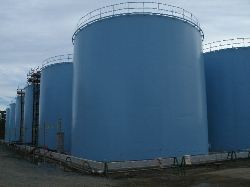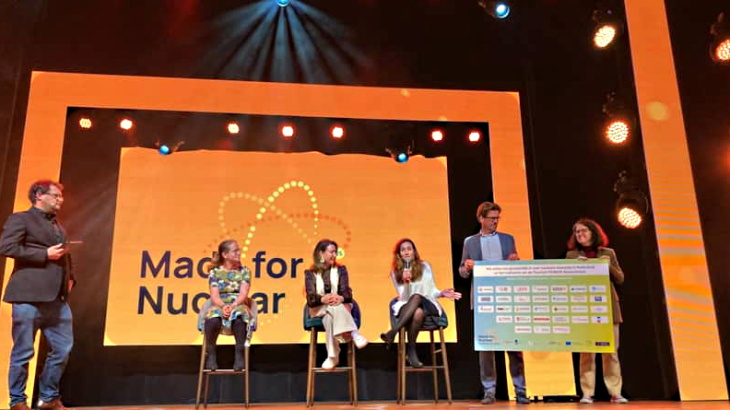The Japanese government has invited overseas companies and experts to submit technology proposals or advice for helping it resolve ongoing contaminated water issues at the Fukushima Daiichi plant.
 |
| Contaminated water will be removed from leaking storage tanks with bolted seams to those with welded seams, as above. |
On 10 September, a ministerial meeting on contaminated water and decommissioning issues concluded that "a team to collect expertise from all over the world and to invite proposals of countermeasures would be established."
In particular, proposals are being sought for dealing with: the accumulation of contaminated water (in storage tanks, etc); the treatment of contaminated water; the removal of radioactive materials from the seawater in the plant's harbour; the management of contaminated water inside the buildings; management measures to block groundwater from flowing into the site; and, understanding the flow of groundwater.
Some 400 tonnes of water is being continuously poured into the damaged reactor buildings at Fukushima Daiichi every day to cool them. In addition, another 400 tonnes of groundwater is flowing into the basements of the buildings and being contaminated each day. Around 800 tonnes of water is therefore being pumped out every day and being treated for caesium removal and desalination. While half of this water is being reused for cooling the reactors, some 400 tonnes is being put in storage tanks.
Plant operator Tokyo Electric Power Company (Tepco) plans to transfer the contaminated water currently stored in the bolted storage tanks to tanks with welded seams. Proposals are being sought for the supply of suitable replacement tanks or suggestions for other methods of storing large amounts of contaminated water on the site. Technology to detect minor leaks is also being sought.
While the current decontamination equipment at Fukushima Daiichi is able to remove caesium from the contaminated water, it is unable to remove the tritium in it. Proposals are being sought for suitable tritium removal equipment.
Ideas are also being requested for technologies to conduct faster groundwater sampling and analysis, so as to better monitor the flow of water into the reactor buildings as well as into the sea. The government has also requested proposals for stopping groundwater flowing into the reactor buildings, as well as preventing contaminated water flowing out of the buildings.
An information workshop for this request for proposals has been organized for interested parties. At the meeting - to be held in Tokyo on 2 October - an overview of the contaminated water issues and government approaches to these issues will be presented.
An invitation to submit advice and technology suggestions has been posted on the website of the newly-created International Research Institute for Nuclear Decommissioning (IRID). The deadline for submitting suggestions is 23 October. IRID will then conduct a preliminary evaluation of submitted proposals and present them in mid-November to a governmental committee for review. At that time, the proposals will also be made public.
Researched and written
by World Nuclear News




_16403_79272.jpg)


_69218.jpg)

_76087_55556.jpg)



